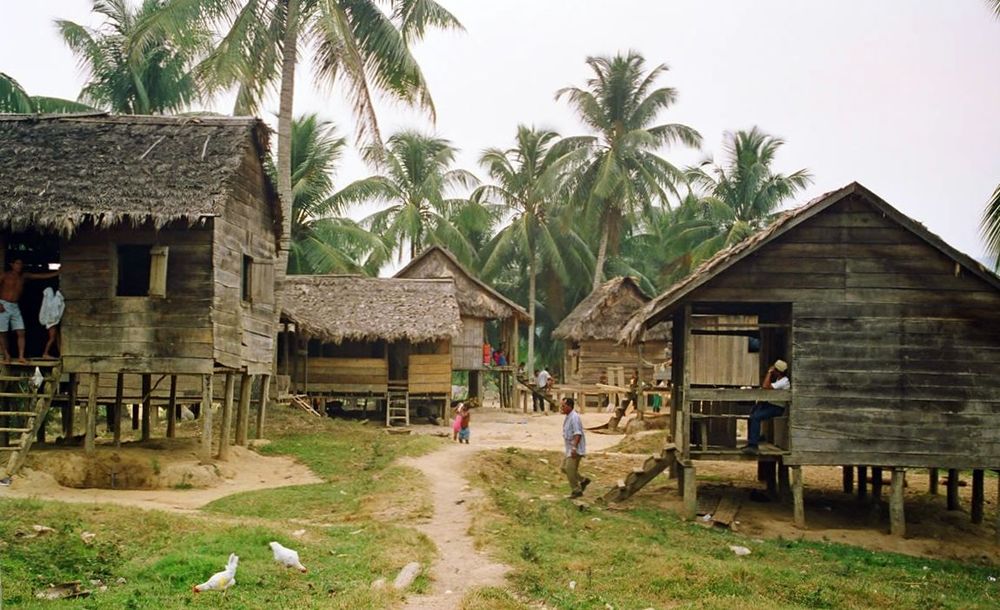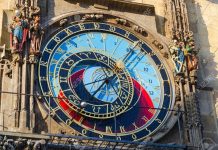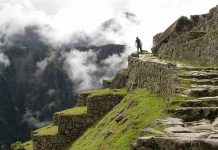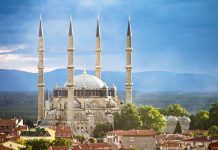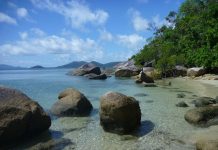Forming a huge wedge between the legendary “Mosquito Coast” and Central America’s largest river, the Rio Coco, which forms much of our border with Nicaragua, is a vast, nearly trackless wilderness known as La Mosquitia. If you combine this region with the Bosawas Reserve on the other side of the border in Nicaragua, you have the largest block of tropical rainforest in Central America. Four distinct indigenous tribes inhabit the long coastline from Palacios east to Cabo Gracias a Dios, and up the many rivers which drain the region. Because of its extensive tracts of primary rainforest, the indigenous peoples that live there, and the dependence on river transportation, La Mosquitia is dubbed “Central America’s Little Amazon”.
Apart from a small, internal system of dirt tracks running from Puerto Lempira to Ahausbila on the Rio Coco, there are no roads in this region, and nearly all transportation in La Mosquitia is done via small planes, over water, or along narrow jungle trails. Rivers are highways that serpentine through the vast lowlands, carrying upon them large motorized cayucos carved from a single trunk of mahogany. Long, thin, elegant dugout pipantes also ply the waters, paddled or poled on the flat river’s surface.
Forming most of La Mosquitia’s western border and serving as a barrier against the advance of migratory agriculture, the Rio Platano Biosphere Reserve is Honduras’ largest protected area.
Probably the most popular excursion travelers make in La Mosquitia is a 3-7 day trip up the Rio Platano to the Miskito and Pech village of Las Marias, and further up river to see the petroglyphs and the rain forest. The trip begins with an early morning, 40-minute flight from La Ceiba to Palacios. Upon landing, you will load into a motorized cayuco that will take you to one of the many beachside villages between the Caribbean and Ibans Lagoon. One popular place to stop is Raist , where there is a butterfly farm where pupae are raised for export to butterfly display houses in the US. Upon arrival you should ask around about a motorized dugout cayuco to take you on the 8-hour trip up to Las Marias the following day.
The journey up the wide, serpentine river to Las Marias does not offer the exotic, jungle experience that is available to those willing to explore a couple of days beyond the village. Much of the forest along the riverbank has been cleared, but the view from the air shows that you don’t have to walk far inland through the fields to reach primary forest. The lower Platano has long been the domain of the Miskito Indians, who migrate up river from the coast to their scattered plots of riverbank land to plant and harvest yuca, platano, some corn and beans and other crops. As you float by their open air, bamboo or cane shelters, you will be privy to an intimate view of the relaxed Miskito lifestyle.
Las Marias is really three small villages strung together. The first you reach is actually the real Las Marias, which fades indiscernibly into Pujulak that in turn becomes Baltiltuk, a Miskito name that means broken bottle. Baltiltuk is the area shared by both the Miskito and the Pech. Two hours hike up river is a relatively new settlement, founded in the late 1980s. These settlers are Pech from villages in Olancho who migrated to the Rio Platano at the invitation of Las Marias Pech, who have lived there for as long as anyone can remember.
In Las Marias, there are many things to do, ranging from just hanging around the river bank and watching the kids play, to day hikes through the surrounding rain forest. One good day hike is the three-hour walk to Cerro Zapote, offering views of Cerro Baltimore and north to Laguna de Ibans. You can also see the snaking Rio Platano that you navigated up from the coast.
The most popular destination out of Las Marias is a group of several petroglyph sites located a day’s journey up river, obliging at least a two-day round trip and a night’s camping. Since above Las Marias the river soon becomes too shallow in spots to take a motorized cayuco, you must ascend the river in the locals’ narrow pipantes; two sitting passengers are poled up river by two palanqueros standing in front, and a sitting navigator with a paddle in back. The trip takes you up through primitive cultivation and secondary forest, past the recent Pech settlement, and into the region where the mysterious rock carvings gaze out over the river.
Among the several glyphs you will see at the first site, Walpa Ulban Sirpe, which means “small carved rocks”, is a large, complicated drawing of what some archaeologists consider to be an alligator with two heads. This could be the most important glyph of them all, since there exists a Pan-American creation myth that tells that the world floats on the back of a two-headed alligator. You can see that one of the heads is drawn in a side profile, and the other shows the head from an on-top-looking-down perspective. A series of jagged, sawtooth-like lines forms the plated back of the alligator, or the mountains of the world. A couple of hundred feet down river from the alligator, on the east bank of the river, there are several small figures, including an alien-looking face.
As you continue up river from Walpa Ulban Sirpe you might discover a few scattered petroglyphs on isolated boulders emerging from the water, until you arrive a couple of hours later at the middle site, a large boulder on a tiny island in the middle of the river. Most of the glyphs are carved on the top of the rock, so you have to climb up to see them. This site is called Walpa Ulban Tara, which means “large carved rocks” in Miskito. Also included in Walpa Ulban Tara is a high concentration of glyphs on a long, thin island another 45 minutes upstream. Many of these are thought to be human or monkey figures and faces. This island is a likely campsite.
A short distance upstream from the island is where the river emerges from the mountain valleys onto the plains. It is worth the time and extra money to hire your guides to take you two days further up river to the mouth of the Rio Cuyamel, an area now deep within the primary tropical rainforest. This is a place where you might hope to see some of the elusive rainforest wildlife, including tapirs, peccaries, river otters, monkeys, crested guans, and ornate hawk eagles. Animals like pumas, jaguars, ocelots, giant anteaters, and harpy eagles roam this area, but are rarely seen.





















